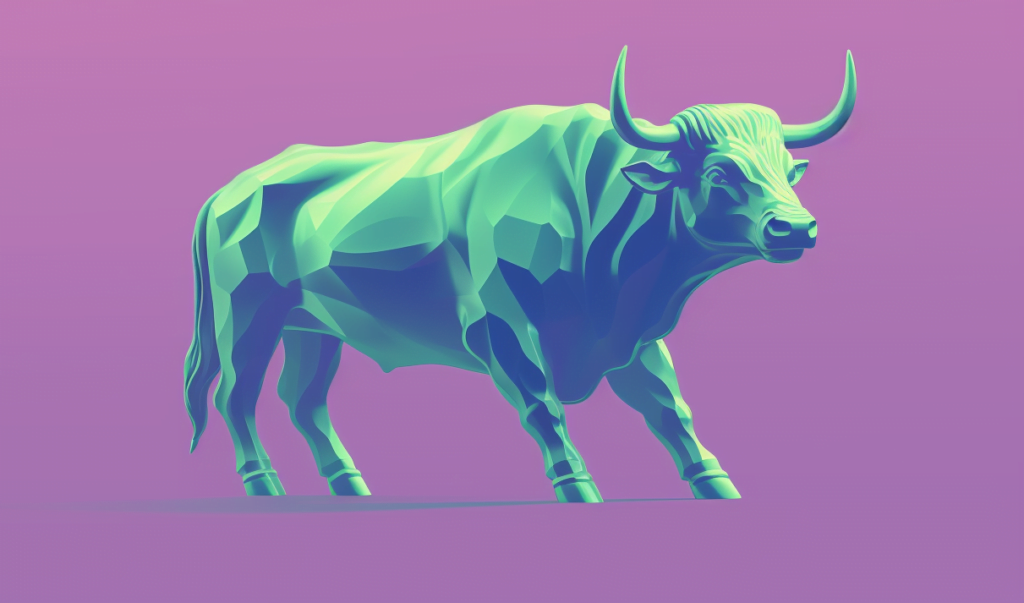A Bull Market is a term used in the financial world to describe a market scenario where the prices of securities are rising or are expected to rise. The term “bull market” is most often used to refer to the stock market but can also apply to anything that is traded, such as bonds, currencies, and commodities.

Characteristics of a Bull Market
- Rising Prices: The most distinguishing feature of a bull market is the upward trajectory of asset prices. A common benchmark for this is when key market indices rise by 20% from their previous lows.
- Optimism: Investors, traders, and the general public are optimistic about the future performance of the market. This positivity feeds into buying behavior, pushing prices up further.
- Economic Recovery or Boom: Bull markets often coincide with periods of economic expansion, lower unemployment, and rising GDP.
- High Trading Volumes: As confidence grows, more investors are willing to buy stocks, leading to increased trading volumes.
- Increased Initial Public Offerings (IPOs): Companies see a bull market as an opportune time to raise capital by issuing shares to the public for the first time.
Causes of a Bull Market
Several factors can trigger or contribute to a bull market, including:
- Robust Economic Fundamentals: Strong GDP growth, low unemployment rates, and other positive economic indicators can support a bull market.
- Low Interest Rates: Lower borrowing costs can stimulate spending in the economy, leading to increased corporate profits and stock prices.
- Technological or Industry Advances: Innovation can lead to increased consumer and business spending in new sectors.
- Government Policy: Fiscal policies, such as tax cuts or increased government spending, can boost economic growth.
Bull Market vs. Bear Market
There is hope and growing prices in a bull market, but there is fear and falling prices in a bear market. A bear market lasts for a very long time and is characterized by widespread pessimism and declining investment prices. A bear market usually starts when prices drop by 20% or more from their most recent highs.
Duration
A bull market may last for many months or even years. It’s important to keep in mind, though, that there can be secondary market downturns during a main bull market. These can be mistaken for the start of bear markets.
Summary
A bull market is a time when people are optimistic about the market and it is growing. Knowing how to spot the signs of a bull market can help buyers decide when to put money into or take it out of investments. But it’s important to know about market cycles and not let confidence cloud your judgment when it comes to money. There are always risks when you invest, so it’s smart to spread your money around, talk to financial advisors, or do a lot of study before making big decisions.




